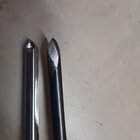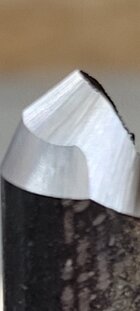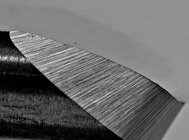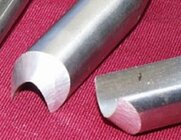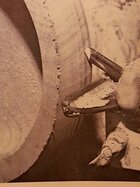A question was asked in another forum about the bowl gouge grinds we are using and I thought, having prepared a response to that, I would also post my response here.
Nowadays I use three basic grinds: 65°, 55° and 42°. The flute profiles on the gouge partly determine which of those grinds I can use on each gouge. If it is not clear what I mean by the different flute profile descriptors that I use below then see the thread that I have previously posted on that without going into detail on that in this thread…
https://www.aawforum.org/community/threads/bowl-gouge-flute-descriptors.20506/
My 65° Grind
I can use this grind on most of the flute profiles that I have. With this grind I can do an inside bottom-of-bowl cut (BoB) using the high angle on the nose and also face off blanks.
The quite convex edge on the wings near the nose can also be used for doing heavy pull cuts for hogging off wood when roughing down/out green wood blanks. The extra convex area of the wing also works well for doing undercuts inside bowls and more closed forms using a reverse push or pull scraping cut.
I also use the long wings back from the nose to do final fine finishing cuts on the outside of bowls.
Here are some examples of my 65° bowl gouges.
Nowadays I use three basic grinds: 65°, 55° and 42°. The flute profiles on the gouge partly determine which of those grinds I can use on each gouge. If it is not clear what I mean by the different flute profile descriptors that I use below then see the thread that I have previously posted on that without going into detail on that in this thread…
https://www.aawforum.org/community/threads/bowl-gouge-flute-descriptors.20506/
My 65° Grind
I can use this grind on most of the flute profiles that I have. With this grind I can do an inside bottom-of-bowl cut (BoB) using the high angle on the nose and also face off blanks.
The quite convex edge on the wings near the nose can also be used for doing heavy pull cuts for hogging off wood when roughing down/out green wood blanks. The extra convex area of the wing also works well for doing undercuts inside bowls and more closed forms using a reverse push or pull scraping cut.
I also use the long wings back from the nose to do final fine finishing cuts on the outside of bowls.
Here are some examples of my 65° bowl gouges.















